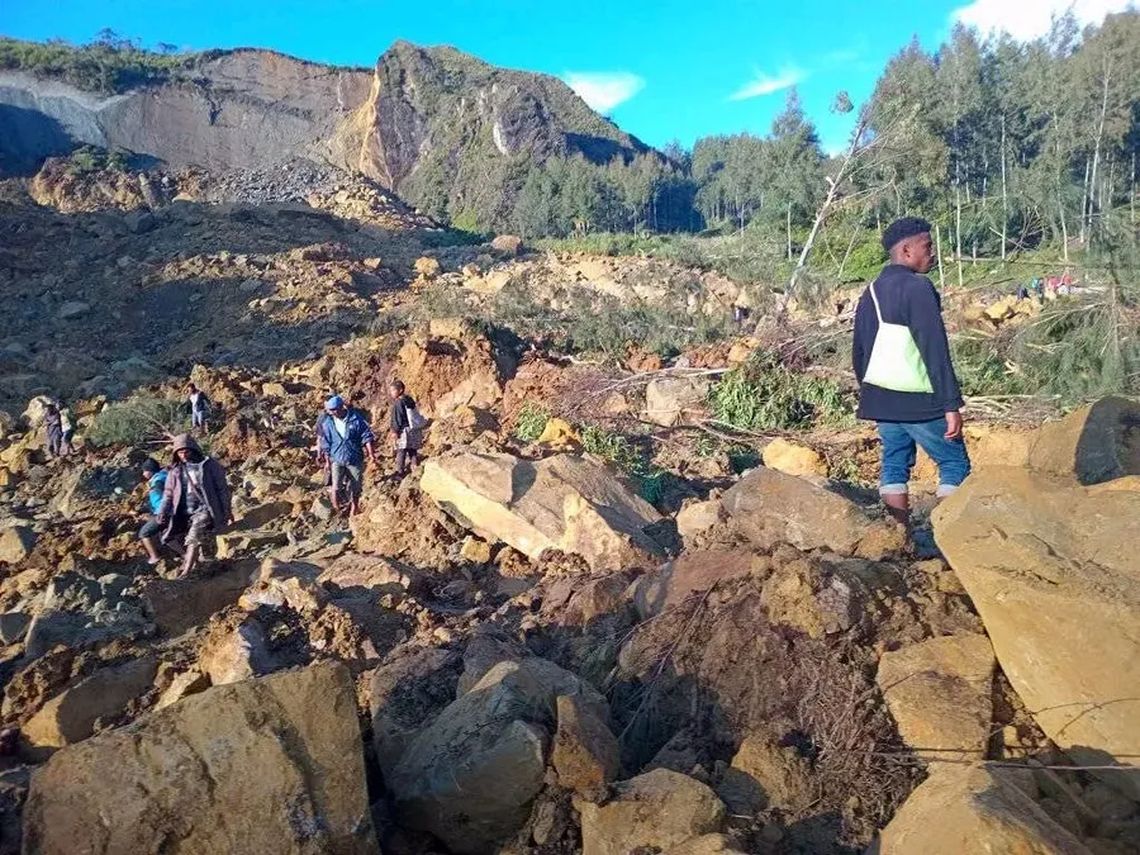
Avalanche in Papua New Guinea Photo: EFE/EPA/Ninga role
Papua New Guinea Prime Minister James Marape on Wednesday blamed unusual rainfall and changes in weather patterns for multiple disasters this year in the Pacific island nation.
In the early hours of last Friday, part of a mountain collapsed in the Maipe-Mulitaka area of Inga Province, northern Papua New Guinea.
It is estimated that more than 2,000 people are dead and buried and up to 70,000 people live in the area affected by the disaster.
Marape told parliament on Wednesday that natural disasters had cost the country more than 500 million kina ($126 million) this year even before the landslide in Inga.
Marape said: “This year we witnessed unusual rainfall that caused floods in river areas, sea levels rising in coastal areas, and landslides in some areas.”
For his part, Deputy Prime Minister John Rousseau said that the country is facing “unusual weather patterns and changes from drought to humidity” and that “the effects of climate change that are happening now are not only affecting Inga. In the last two months we have witnessed unprecedented disasters across the country.” .
This Wednesday, food, water, blankets and tents provided by Australia began arriving to the disaster area on board two military planes, the first in an air bridge that will provide, over successive days, supplies, rescue personnel and technical equipment.
The authorities expressed concern about the spread of diseases in the context of warnings of new landslides, while orders were issued to evacuate thousands of people.
The avalanche, which was recorded in the early hours of last Friday, buried about 150 buildings under a layer of rocks and mud between 6 and 8 meters high, according to the United Nations, in a town in Inga Governorate in a mountainous area. Prone to flooding in northern Papua.
“Recovering bodies is very difficult. Most of the work is done manually,” Matti Bagosi, the UN humanitarian adviser in Papua New Guinea, told Spain’s EFE agency.
So far, only ten bodies have been recovered in the affected area, which, according to field sources consulted by EFE, would occupy the equivalent of three or four football fields.
On Wednesday, most humanitarian aid began arriving in the affected area, without effort and risk.
The bridge that connected the main highway to Inga province collapsed, and thus heavy machinery was unable to reach the disaster site.
At the same time, taking alternative routes increases aid delivery delays and risks attacks due to tribal conflicts in the region, forcing humanitarian workers to travel with military escorts.

“Award-winning alcohol trailblazer. Hipster-friendly internetaholic. Twitter ninja. Infuriatingly humble beer lover. Pop culture nerd.”

